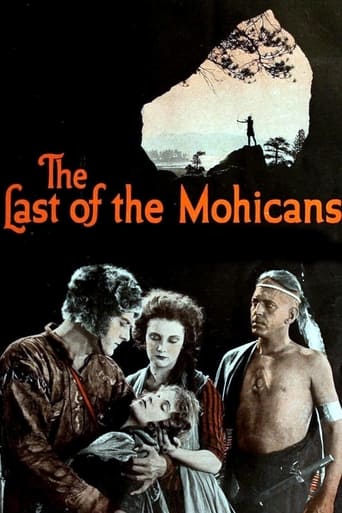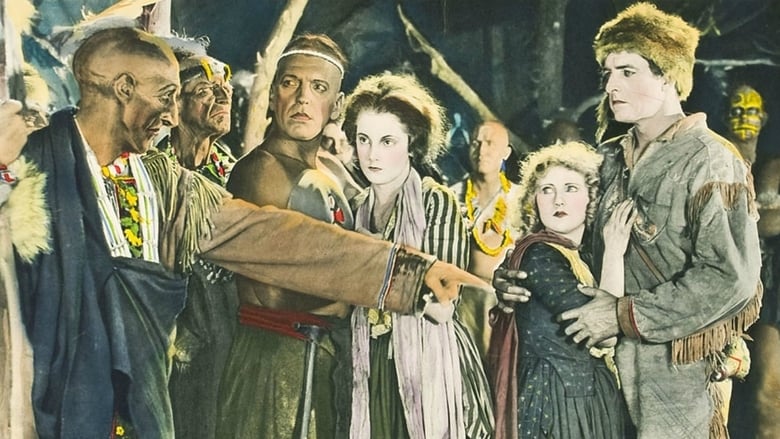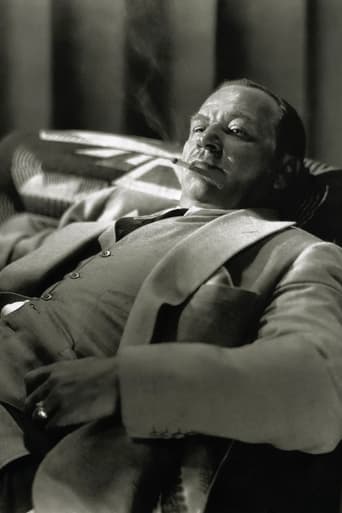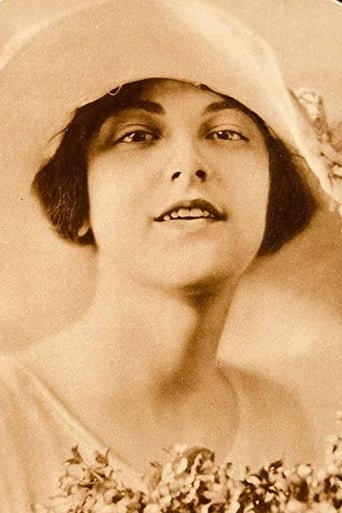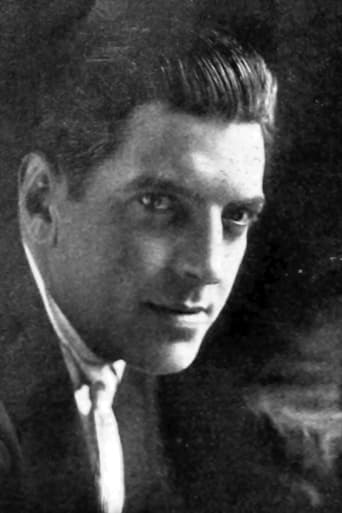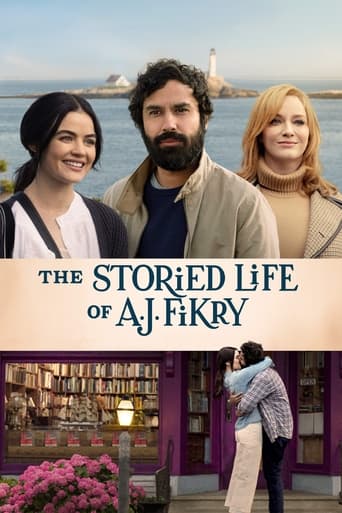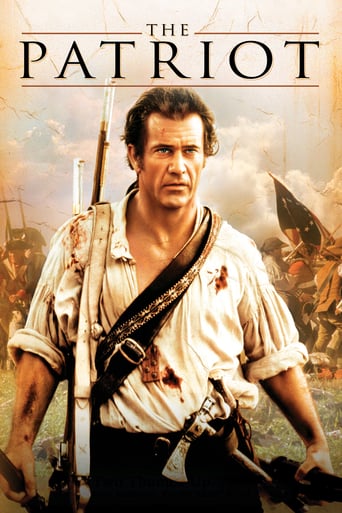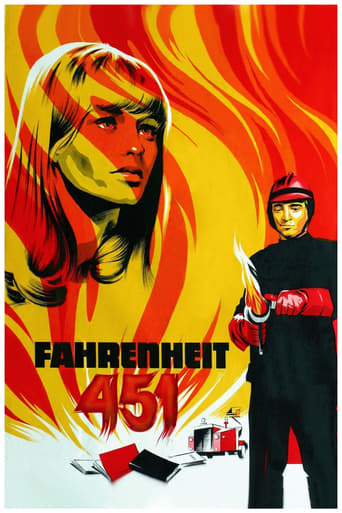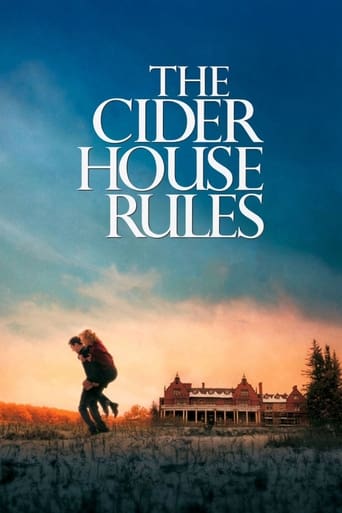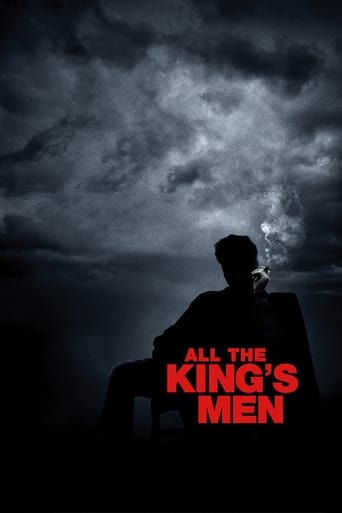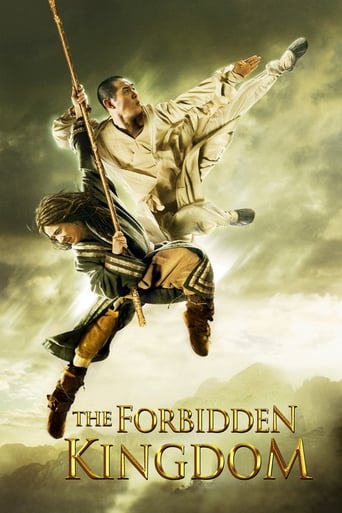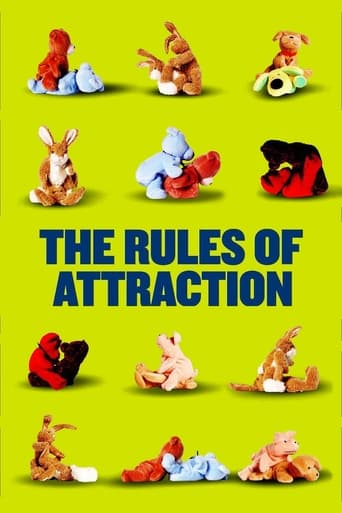The Last of the Mohicans (1920)
As Alice and Cora Munro attempt to find their father, a British officer in the French and Indian War, they are set upon by French soldiers and their cohorts, Huron tribesmen led by the evil Magua. Fighting to rescue the women are Chingachgook and his son Uncas, the last of the Mohican tribe, and their white ally, the frontiersman Natty Bumppo, known as Hawkeye.
Watch Trailer
Cast
Similar titles

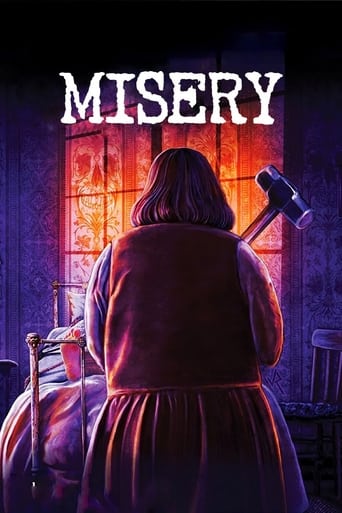
Reviews
Let's be realistic.
There is, somehow, an interesting story here, as well as some good acting. There are also some good scenes
Like the great film, it's made with a great deal of visible affection both in front of and behind the camera.
The movie really just wants to entertain people.
The 1992 version is great, with Daniel Day Lewis and Madeleine Stowe in full swing and establishing an impressive and sensual chemistry as the romantic pair of the movie, the best that has ever been seen in the movies. But this 1920 version is also very good and was a surprise to me, as there are several changes in the final part of the film compared to 1992, being the much more tragic outcome in this 1920 version (but equally powerful and realistic, maybe even more) than in the latest version. Silent movies continue to be a constant (good) surprise to me. The actress Barbara Bedford is fantastic, I think she is the great star of the movie. The 1920s are undoubtedly one of the richest and most creative decades in film history.
Director: MAURICE TOURNEUR. Associate director: Clarence Brown. Screenplay: Robert A. Dillon. Based on the 1826 novel by James Fenimore Cooper. Photographed in black-and-white by Philip R. Dubois and Charles Van Enger. Art director: Floyd Mueller. Producer: Maurice Tourneur. A Maurice Tourneur Production. Copyright by 16 November 1920 by Maurice Tourneur. Released through Associated Producers in the U.S.A. New York opening at the Strand: 2 January 1921. 77 minutes at sound speed (which is slightly too fast. At correct speed, film should run 85-90 minutes). SYNOPSIS: Betrayed by a cowardly officer, Fort William Henry falls to the French and their barbaric Indian allies. One traitorous Indian captures the colonel's two daughters, but is pursued by the eldest daughter's lover, Uncas, the last of the Mohicans. NOTES: First film version of the Cooper novel, a top money-maker worldwide.COMMENT: Handsomely realized on the grandest of scales, this superb presentation of the second Leatherstocking Tale is a grippingly suspenseful narrative from start to finish. Tourneur has directed in his usual, meticulously picturesque style, each frame both beautifully and dramatically composed. Making marvelous use both of outdoor locations and man-made sets, the picture constantly engages the eye as much as it grips the heart and the emotions. The use of white actors in Indian roles (which Hollywood was still doing even in 1999) was much criticized at the time of the film's release. Fortunately, we are now so used to this convention, that we can enjoy the film far more than contemporary critics. Wallace Beery, in fact, gives a typically villainous performance as the evil Magua. Opposite him, Barbara Bedford makes a feisty heroine, whilst solid support is offered by George Hackathorne as the cowardly Randolph. The only player I was a little unhappy with was Albert Roscoe, whom I thought a little stiff as Uncas. The photography (aided in the print under review by wonderful tinting) is a joy to behold. As stated, the budget is unstinting, the action scenes especially being staged on the most elaborate scale. The camera rarely moves, but when it does as in the rapid tracking shots during the massacre sequence, it is more than routinely effective. The novel has been translated to the screen with such admirable fidelity that its realism is too potent for children and adolescents.
It's ironic that my first taste of this great American novel adapted to film should be the 1920 silent version instead of a more modern day remake like the early Nineties film starring Daniel Day-Lewis. Perhaps it's for the better, I thought this was a rather stunning film for it's cinematography and epic sense of adventure. Oddly, I've never read the James Fennimore Cooper classic, so now I'm inclined to add that task to my To Do List as well. What probably surprised me the most here was how graphic the violence was during the Huron's drunken attack on the fort. When Magua (Wallace Beery) grabbed the woman's baby and threw it away I literally jumped off my seat! There was also the most incredible stunt work displayed in the fight between Magua and Uncas (Alan Roscoe) with that incredible slide down the mountainside and fighting among the rocks of the waterfall. Having seen a number of silent films to date, I thought the use of inter-title cards at the beginning of the story seemed somewhat overdone, whereas they virtually disappeared during the latter part of the picture. The principal players were uniformly good in their portrayals, and the inter-racial romance at the heart of the story had a poignant quality that didn't need to be the dominant focus for the film to work. What really stands out is the professionalism and quality regarding all aspects of the picture, a genuine must see film I'd readily recommend from the silent era.
Last of the Mohicans, The (1920) *** (out of 4) Early adaptation of James Fenimore Cooper's novel doesn't have the best of stories and has more in common with The Birth of a Nation rather than the book but overall the film remained entertaining. The best moments happen at the end with a dazzling action sequence on a tall cliff that has to be seen to believed. Follow that up with a terrific knife fight with some beautiful locations makes this an easy film to recommend. But be forewarned that if you were offended by the Griffith film then you'll probably be even more outraged here. The cliff scene borrows a lot from the Griffith movie and some of the battle scenes do as well but with the white actors playing Indians with paint on them (which you can see melting in a few scenes) and some of the negative stereotypes some might find it offensive. Boris Karloff was an extra in this film but I wasn't able to spot him while watching.
